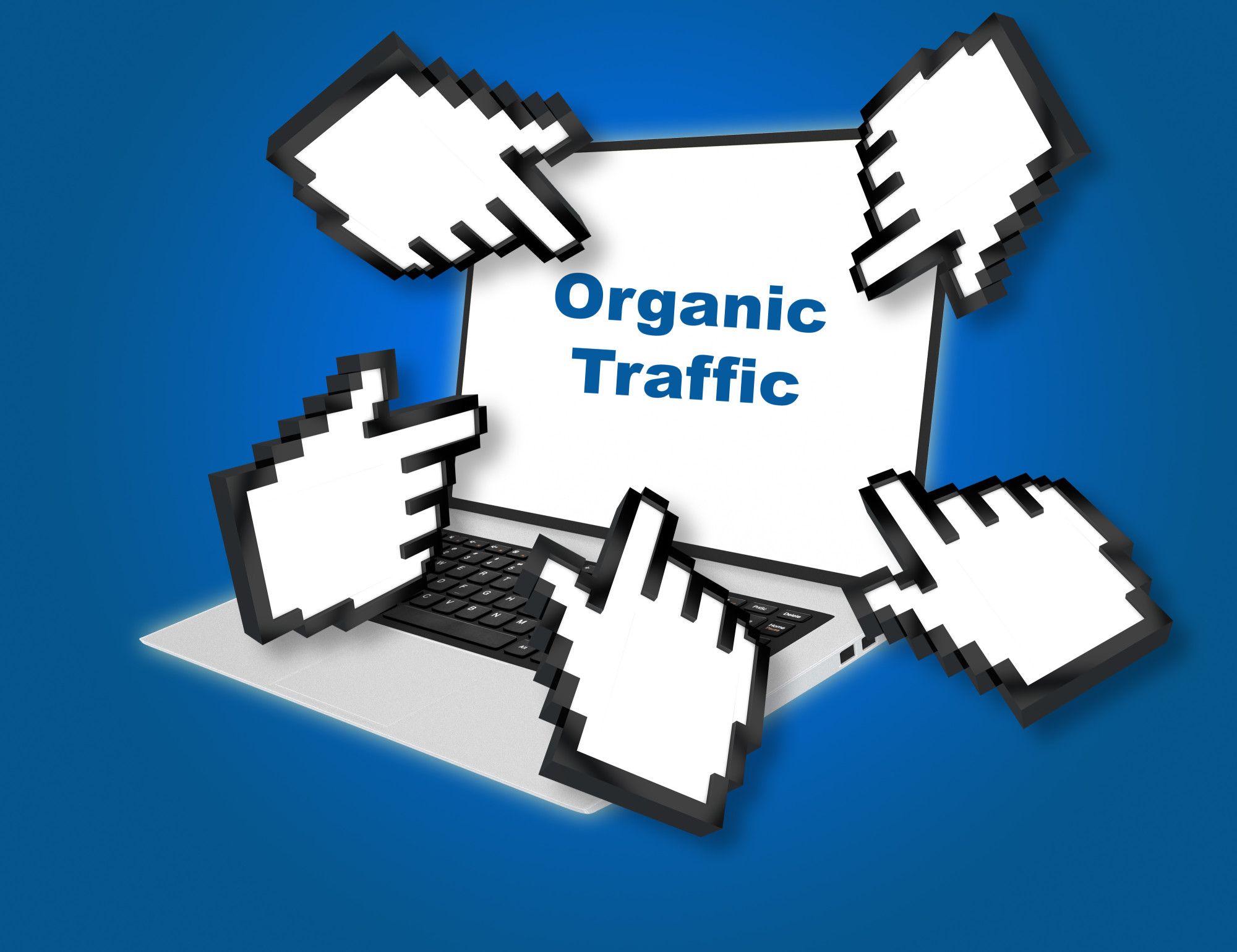Grow Organic Traffic with JARVEEPRO's Automated Social Media Posts

Driving traffic to your website is critical for online success, but understanding the differences between organic and inorganic traffic can help you shape a more effective digital marketing strategy. Each type of traffic plays a unique role in the overall health of your website, impacting not just visitor numbers, but also user engagement, conversion rates, and long-term SEO success.
Overview to Organic Traffic and Inorganic Traffic
Organic Traffic
Organic traffic refers to visitors who land on your website through unpaid channels, primarily via search engine results or social media engagement. This type of traffic is generated naturally, without the need for paid advertisements. The key sources of organic traffic include:
Search Engine Results: When users search for keywords related to your content, products, or services, search engines like Google display results based on their relevance and authority. Websites that rank highly in these search results receive organic traffic. The process of optimizing your website to improve its visibility in search engines is known as Search Engine Optimization (SEO).
Social Media Engagement: Organic traffic can also come from social media platforms when users interact with your posts and follow links to your website. Engaging and relevant content can attract users who are genuinely interested in what you offer, leading them to explore your site further.
Direct Traffic: This occurs when users type your website's URL directly into their browser, often because they are familiar with your brand. This form of organic traffic indicates strong brand recognition and loyalty.
Benefits of Organic Traffic:
- High-Quality Visitors: Organic traffic typically consists of users who are actively searching for information or solutions related to your offerings, making them more likely to engage with your content and convert into customers.
- Cost-Effective: While SEO requires an initial investment in time and resources, the resulting organic traffic is essentially free, providing long-term benefits without ongoing costs.
- Sustainability: Once established, organic traffic can continue to grow over time, especially if you maintain and improve your SEO efforts. Unlike paid campaigns, organic traffic does not stop once you stop paying.
- Improved Credibility and Trust: High rankings in organic search results can enhance your brand’s credibility, as users tend to trust websites that appear at the top of search engine results.
Inorganic Traffic
Inorganic traffic refers to visitors who arrive at your website through paid channels. This includes various forms of online advertising, such as:
Pay-Per-Click (PPC) Advertising: Platforms like Google Ads allow you to bid on keywords relevant to your business. When users search for these keywords, your ad appears alongside or above the organic search results. You pay a fee each time a user clicks on your ad, hence the term "pay-per-click."
Display Advertising: These are banner ads that appear on websites, apps, or social media platforms. They can be targeted to specific demographics, interests, or behaviors, and aim to attract users to your site.
Social Media Ads: Social media platforms like Facebook, Instagram, LinkedIn, and Twitter offer paid advertising options that allow you to target users based on various criteria. These ads can be in the form of promoted posts, sponsored content, or targeted ads that appear in users' feeds.
Affiliate Marketing: This involves partnering with affiliates who promote your products or services on their platforms. In return, you pay them a commission for every sale or lead generated through their efforts.
Benefits of Inorganic Traffic:
- Immediate Results: Inorganic traffic can generate immediate results, as paid campaigns can start driving visitors to your site as soon as they are live.
- Targeted Reach: Paid traffic allows for precise targeting, enabling you to reach specific demographics, interests, and behaviors that align with your business goals.
- Scalability: With paid campaigns, you can scale your efforts quickly by increasing your budget, allowing you to reach a larger audience.
- Control and Flexibility: Inorganic traffic gives you control over when, where, and how your ads appear, and you can easily adjust your strategy based on performance data.
Comparing Organic and Inorganic Traffic
While both organic and inorganic traffic have their advantages, understanding their differences can help you allocate your resources more effectively.
Longevity vs. Short-Term Gains: Organic traffic offers long-term benefits and sustainability, while inorganic traffic delivers immediate, albeit temporary, results.
Cost Considerations: Inorganic traffic requires ongoing investment, which can be substantial depending on your industry and the competitiveness of your keywords. In contrast, organic traffic, although slower to develop, is more cost-effective in the long run.
Quality of Traffic: Organic traffic generally brings in more engaged users who are actively searching for what you offer, leading to higher conversion rates. In contrast, inorganic traffic may include users who clicked on an ad out of curiosity or by mistake, potentially leading to lower engagement.
Impact on SEO: While inorganic traffic can boost visibility and awareness, it doesn’t contribute directly to SEO. Organic traffic, on the other hand, is a direct result of good SEO practices and contributes to improved search engine rankings over time.
Integrating Organic and Inorganic Traffic Strategies
A successful digital marketing strategy often involves a blend of both organic and inorganic traffic. For instance, you might use PPC ads to drive immediate traffic while simultaneously working on your SEO to build up organic traffic over time. Social media can also be a powerful tool in this mix, with paid ads amplifying your reach and organic posts fostering engagement and brand loyalty.
Overview of JarveePro
JarveePro is a comprehensive automation tool designed to enhance social media marketing efforts. It supports multiple social media platforms, including Instagram, Facebook, Twitter, LinkedIn, Pinterest, and more. JarveePro allows users to automate tasks such as scheduling posts, following/unfollowing accounts, liking/commenting on posts, and sending direct messages.
Key Features of JarveePro:
- Automated Scheduling: Schedule posts across various social media platforms, ensuring consistent online presence without manual effort.
- Engagement Automation: Automatically engage with potential followers by liking, commenting, and following relevant accounts, thereby increasing visibility.
- Account Management: Manage multiple social media accounts from a single dashboard, streamlining your marketing efforts.
- Advanced Targeting: Use filters and criteria to target specific audiences, making your marketing more effective.
How JarveePro Helps Optimize SEO with Automated Posts
Automated social media posts through JarveePro can significantly enhance your SEO efforts by driving more organic traffic to your website. Here’s how:
Consistency in Posting: Regular posting on social media is crucial for maintaining audience engagement and driving traffic to your website. With JarveePro, you can automate your posts, ensuring that your content is consistently shared at optimal times, increasing your chances of reaching a broader audience.
Increased Social Signals: Social signals, such as likes, shares, and comments, are important factors that search engines consider when ranking websites. By automating your social media activity with JarveePro, you can increase these social signals, positively impacting your SEO and boosting your site's visibility.
Targeted Engagement: JarveePro's advanced targeting options allow you to engage with specific audiences who are more likely to be interested in your content. By driving relevant traffic to your site, you improve user engagement metrics like time on page and bounce rate, which are critical for SEO.
Backlink Opportunities: Regularly sharing valuable content on social media can lead to other sites linking back to your content, creating valuable backlinks. Backlinks are a significant ranking factor for search engines, and JarveePro helps you achieve this by automating your social sharing efforts.
Time and Resource Efficiency: Automating social media posts frees up time and resources that can be allocated to other SEO efforts, such as content creation and keyword optimization. This efficiency can lead to a more holistic and effective SEO strategy.
FAQs
1. Which type of traffic is better for long-term SEO?
Organic traffic is more beneficial for long-term SEO as it builds your website’s authority and credibility, leading to sustained visibility and search engine rankings.
2. Does organic traffic improve my website's credibility?
Yes, consistent organic traffic signals to search engines that your content is valuable and trustworthy, enhancing your site’s credibility and authority.
3. Is inorganic traffic still useful?
Absolutely. Inorganic traffic provides quick results and targeted reach, especially useful for promotions or new product launches. Combining both traffic types is ideal for overall growth.
4. How can JarveePro help with traffic?
JarveePro boosts organic traffic by automating social media posts, enhancing engagement and social signals. It also streamlines your paid ad campaigns, optimizing both organic and inorganic traffic strategies.
Check here for more details and news about JarveePro.



